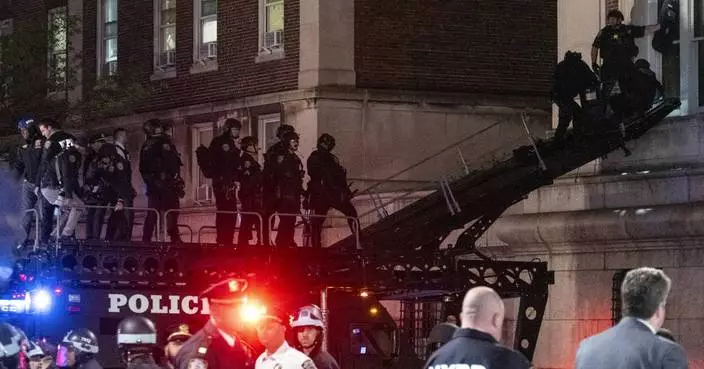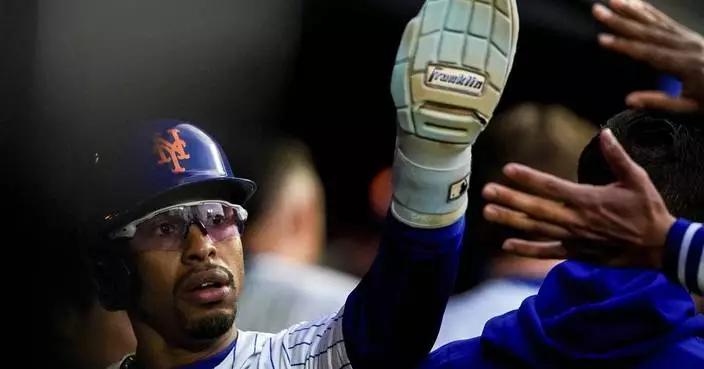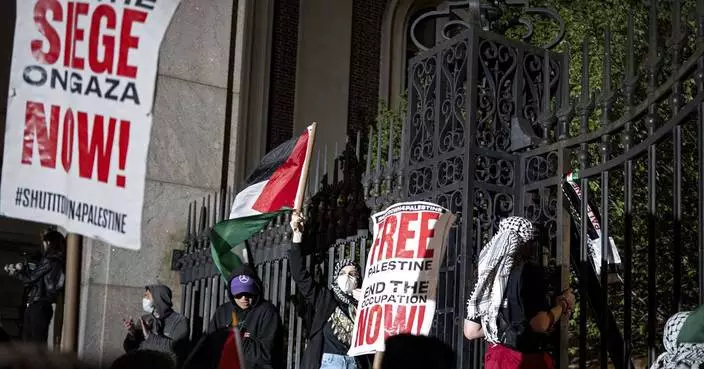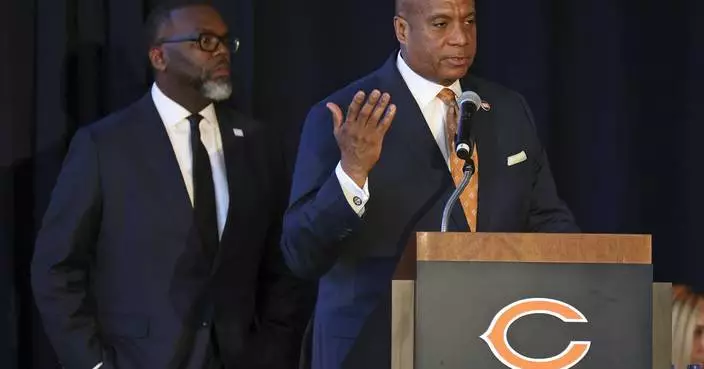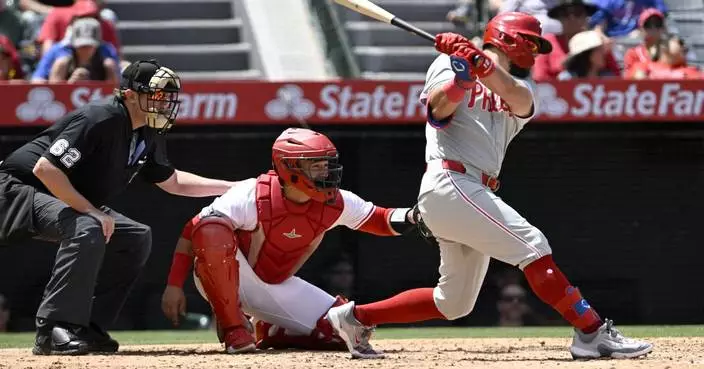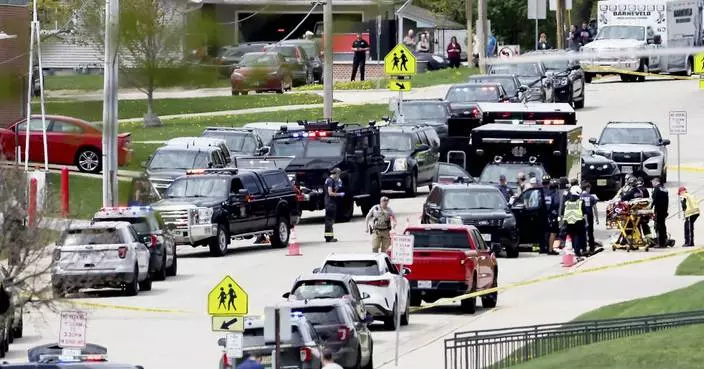MANHASSET, N.Y.--(BUSINESS WIRE)--Apr 11, 2024--
High school students from Garden City High School were awarded the title of Medical Marvels in this year's 12th annual science, technology, engineering and math (STEM) research competition, hosted by The Feinstein Institutes for Medical Research and Northwell Health’s Career Services team. More than 150 first- and second-year high school students from Long Island and New York City wrote research papers and presented novel ways to tackle educational inclusion for people living with disabilities. The winning team was announced on April 10, after the finalists presented their ideas in person at the Feinstein Institutes.
This press release features multimedia. View the full release here: https://www.businesswire.com/news/home/20240411195962/en/
The winning students from Garden City High School during the 12th Annual Medical Marvel’s competition at the Feinstein Institutes for Medical Research. (Credit: Feinstein Institutes)
Students from 25 schools were tasked with the hypothetical challenge to of addressing improving the schooling experience for people with disabilities, including transportation, accessibility and curriculum. The students envisioned themselves as principals of a large junior high school and had to form a committee to outline innovative solutions to make their school more inclusive.
Teams were required to submit a scientific research paper to answer key considerations, including what solutions they would put into place and how to measure success. A panel of scientists, clinicians and health care administrators evaluated the submissions and presentations using a five-point scale scoring rubric. The applications were judged for qualities such as innovation, clarity, approach and measurement of success.
“Now in our 12th year, we have asked Long Island’s most brilliant young minds to thoughtfully address some of society's most pressing issues, like human trafficking and gun violence, and this year, educational inclusion,” said Lauren Pearson, director of Talent Sourcing at Northwell. “Through the Medical Marvels program, we aspire to ignite the passion of future scientists, engineers, doctors and changemakers, fostering a commitment to improving and making our communities healthier.”
The winning students – who will split $1,800 – from Garden City High School included Clara Archer, Anais Bardizbanian, Cailin Gately, Alexandra Gregory, Breckin Kammerer and Giuliana Pamatat. The team proposed the idea of EyeDesk TM, which uses assistive technology, digital learning platforms and AI learning assistants to create a more accessible educational experience for students. Some of the items in the EveyDesk TM included a sensory board, live real-time speech to text, proofreading, facial recognition software, an AI assistant, illuminated buttons and a multi-function surface.
“Congratulations to every student who participated in the Medical Marvels competition. Your accomplishments serve as a beacon of inspiration, reaffirming the pivotal role of STEM education in crafting a more inclusive and equitable tomorrow,” said Senator Kirsten Gillibrand (D-NY). “As these students evolve into tomorrow's innovators, I eagerly anticipate witnessing their transformation into the problem-solvers of our future.”
During the in-person event, Senator Gillibrand shared a special pre-recorded message with the students. In addition, leaders across Northwell shared valuable insight around the issue of accessibility and inclusion, including a keynote address from Chad Bouton, professor at the Feinstein Institutes’ Institute of Bioelectronic Medicine. Professor Bouton, internationally known for his groundbreaking work in brain-computer interface technology, shared valuable insight on innovation and persistence in the STEM field.
“The high school students of today will emerge as the future leaders in medicine, science, public health and technology,” said Kevin J. Tracey, MD, president and CEO of the Feinstein Institutes and Karches Family Distinguished Chair in Medical Research. “At the Feinstein Institutes, we are honored to welcome and engage with these young Medical Marvels, drawing inspiration from their ingenuity, innovative ideas, and intelligence.”
Students from Valley Stream South High School placed second while Jericho High School were third. The second place team will receive a $1,000 scholarship and the third place teams will each receive a $500 scholarship.
About the Feinstein Institutes
The Feinstein Institutes for Medical Researchis the home of the research institutes of Northwell Health, the largest health care provider and private employer in New York State. Encompassing 50 research labs, 3,000 clinical research studies and 5,000 researchers and staff, the Feinstein Institutes raises the standard of medical innovation through its five institutes of behavioral science, bioelectronic medicine, cancer, health system science, and molecular medicine. We make breakthroughs in genetics, oncology, brain research, mental health, autoimmunity, and are the global scientific leader in bioelectronic medicine – a new field of science that has the potential to revolutionize medicine. For more information about how we produce knowledge to cure disease, visithttp://feinstein.northwell.eduand follow us onLinkedIn.
About Medical Marvels
An annual STEM competition for ninth and tenth grade high school students, The Medical Marvels program believes in the academic promise of all students, and that by investing in their ideas, the future health and well-being of our community will be served. They also believe that by investing in youth and giving them a sense of place and responsibility for problem solving in the community, a community ensures that it will have bright and capable future leaders for STEM careers. Any New York State-accredited educational institution in Nassau, Suffolk, Manhattan, Queens, Brooklyn, the Bronx, Staten Island, or Westchester is eligible to participate. Medical Marvels was established in 2013 by the Feinstein Institutes for Medical Research and Northwell Health’s Career Services.
Student journalists on the Columbia University campus knew what was coming long before police with riot shields arrived to begin arresting the pro-Palestinian protesters.
They had watched the situation spiral as the protesters stood their ground, refusing to abandon Hamilton Hall and using a pulley system to bring supplies into the building they had occupied.
The reporters, working for university and online U.S. and international publications, suspected negotiations with administrators were going nowhere when the protesters began donning COVID-era masks to hide their identifies. Some began sleeping on the floor in journalism classrooms or offices out of fear of missing something.
But when a journalism professor began writing the phone number to call if they were arrested in permanent marker on their arms, that was the moment it became clear: They were capturing history.
The police operation Tuesday night that cleared out Hamilton Hall capped two weeks of drama over the protests at Columbia, which student journalists at the Ivy League school lived through as they were covering it.
Other media were being kept off campus, so these reporters were the only ones who could capture what was happening.
“I just woke up and I was like, I’m going to go and take some pictures,” said Seyma Bayram, a Columbia journalism fellow focused on creating a longform investigative podcast unrelated to the protests.
The encampments were a visual feast. There were musical performances, students reading and helping each other write papers for their classes. She wanted to document it all.
By Monday, students were facing suspension if they didn’t leave. Crowds marched around the encampment chanting. Students were giving written notices from the administration, warning them to go. They ripped them up, dumped them in trash bins. Rumors were flying.
That night, Bayram was unwilling to go home, sleeping on her office floor.
“How,” she wondered, “are they going to remove the students. They’re not leaving.”
By Tuesday, she was exhausted. The student reporters charged their cameras and other gear, and waited.
Many protesters were starting to leave, recalled Shayeza Walid, a graduate journalism student at Columbia, who covered the arrests for the news website Al-Monitor.
The sun was setting as they held hands and chanted, knowing they faced academic repercussions by remaining. Many had given up covering their faces by now, Walid said.
To her the chants sounded like a hymn and she saw the protesters, some clad in Palestinian keffiyehs, crying. She doubts she will ever forget it.
“It felt so both inspirational and devastating because these were the kids who were willing to get arrested,” she recalled.
And then police started assembling outside, setting up barricades. Even on campus, Bayram could tell by the photos posted on social media that police action was imminent. And then the police were there.
“I don’t know, it was just like all of a sudden there were just like police, ... riot gear everywhere,” Bayram said.
The student journalists were walking backward, filming as they went, Bayram said.
She was pushed off campus. Police buses and officers were everywhere. Around her, people were being arrested.
“Those of us who are pushed out, like student reporters and faculty, I think we were just all horrified that no press was present outside of, or inside of, Hamilton Hall,” Bayram said.
Walid recalled that the reporters paired up for safety. Her partner, an international student, had never seen so many police in one place. “And frankly, I hadn’t either,” Walid said.
She said the police also seemed shocked when they came into campus and saw how few students were left. “It was very evidently disproportionate from where we were standing,” she said.
Before the arrests, protesters inside the campus used a megaphone to lead those protesting outside in chants, recalled Cecilia Blotto, a graduate journalism student, who has been publishing photos and video to Uptown Radio, a project of the university's journalism program.
“Columbia, you are a liar," she recalled them chanting, along with “Disclose, divest! We will not stop, we will not rest.”
Then Blotto saw a police buses pull up, officers exiting with shields and zip ties. Then they played a recording saying that if the protesters didn’t disperse they would be arrested.
“People were like being dragged out on the street, with like four cops holding a leg and an arm each. I saw some really, like, striking images of people, like, yelling shame at the cops, while they were dragging out students,” Blotto said. She tried to film it all.
Emily Byrski, a graduate student who had a phone number written on her arm in case she was arrested, said the students weren't totally unprepared. There had been a training session.
Still, she said, there had been so many false alerts.
“It’s like the boy who cried wolf. Like, there were two or three nights here where we were told, there was a rumor going around that the NYPD was coming, please come to campus,” she recalled.
Byrski had knee surgery earlier in the year, so was unable to run as police descended. She limped along with her buddy.
“So we’re sort of seeing this all happen from inside and trying to document it as the NYPD is grabbing people, like shoving them to the ground. It was pretty horrifying to see, like, right a foot away from me,” Byrski said.
She said she has seen professors cry over the last week. She is pondering it all, uncertain what to make of it.
“I’m just sort of in shock,” Byrski said. “I think we all kind of were in shock.”
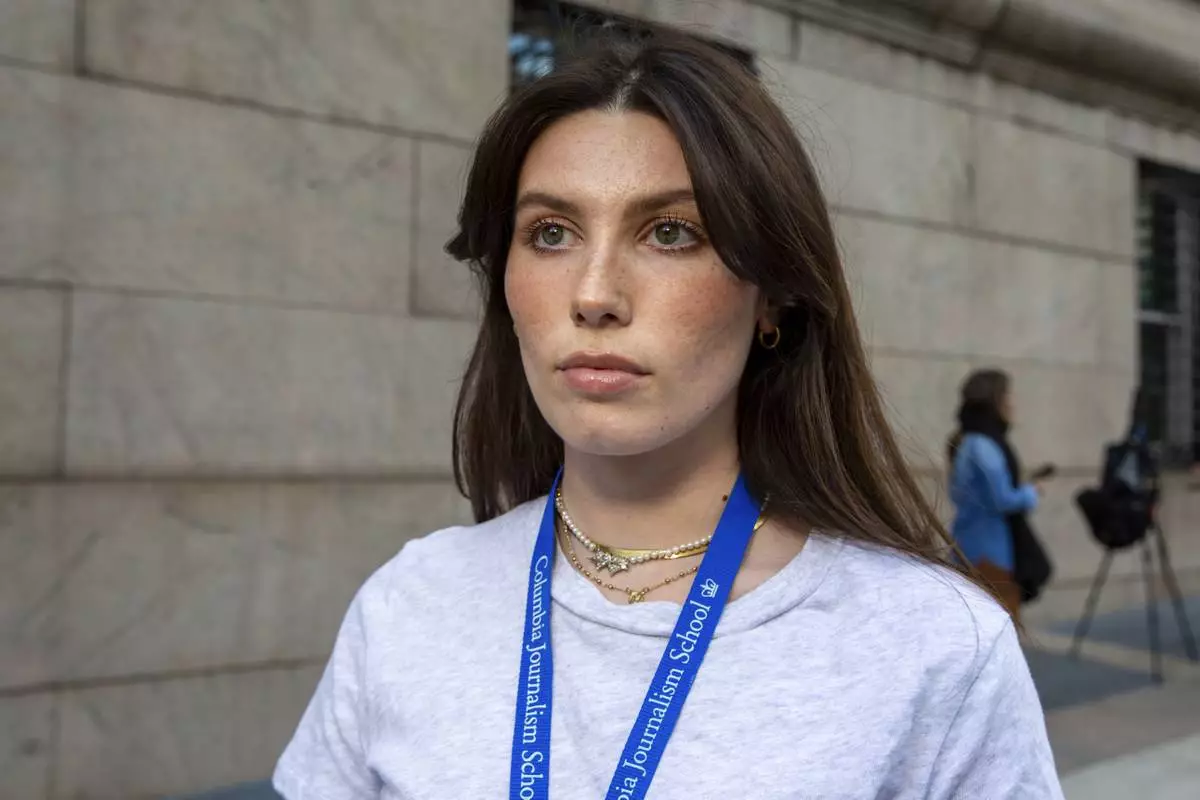
Columbia Journalism School student Cecilia Blotto poses for a photo in front of Hamilton Hall on Wednesday, May 1, 2024, in New York, where, hours earlier, New York police burst in to break up a demonstration by protesters who had occupied the building. (AP Photo/Ted Shaffrey)

Columbia Journalism School student Cecilia Blotto speaks during an interview in front of Hamilton Hall on Wednesday, May 1, 2024, in New York, where, hours earlier, New York police burst in to break up a demonstration by protesters who had occupied the building. (AP Photo/Ted Shaffrey)
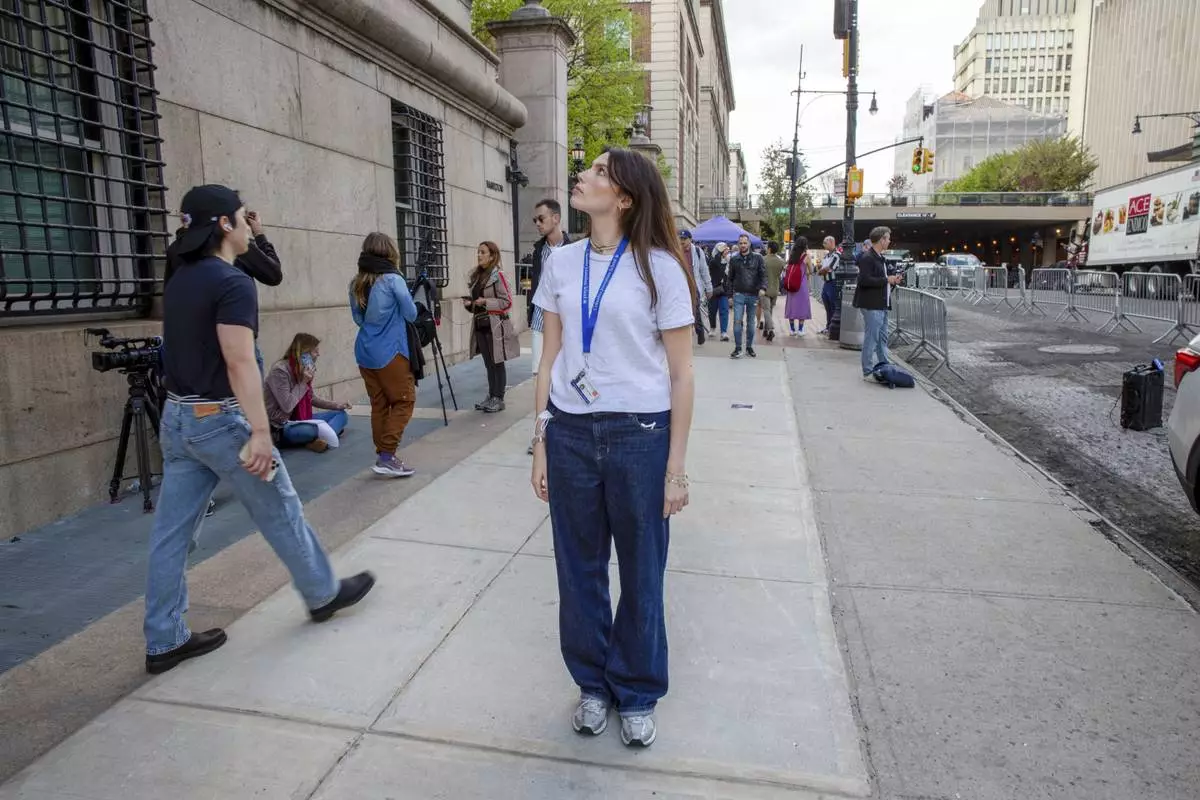
Columbia Journalism School student Cecilia Blotto stands in front of Hamilton Hall on Wednesday, May 1, 2024, in New York, where, hours earlier, New York police burst in to break up a demonstration by protesters who had occupied the building. (AP Photo/Ted Shaffrey)






